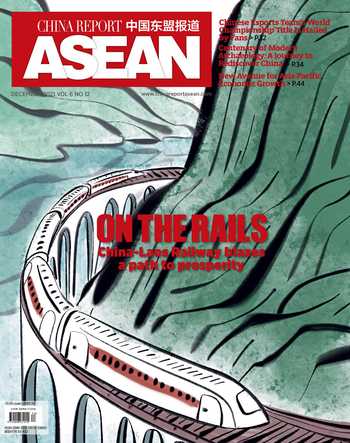STARTING BLOCKS
By Lan Xinzhen
Analyzing 100 years of Party history sheds more light on Chinas evolution
The Sixth Plenary Session of the 19th CentralCommittee ofthe Communist Party of China (CPC), held inBeijing fromNovember 8to 11, focused on the Partysachievements over the pastcentury and the lessons it has drawn from this process.
This session is particularlycrucial for todays China.Since its inception, the CPChas devoted itself to the causeof revitalizing the Chinesenation. The great rejuvenation is divided into two stages, also known as the two centenarygoals. The first refers tothe completion of buildinga moderately prosperoussociety in all respects by thecentenary of the CPC in 2021,and the second is to transform China into a modern socialistcountry that is prosperous,strong, democratic, culturallyadvanced, harmonious andbeautiful by the centenary ofthe Peoples Republic of China (PRC)—founded in 1949. July 1 this year marked the CPCs100th anniversary and thenations achievement of thefirst centenary goal. Today, the whole country marches toward the second centenary goalunder the Partys leadership.Convened at this juncture oftransitioning from the firstgoal to the second, the SixthPlenary Session was entrusted with charting a clearer coursefor the nations future.
History offers importantinsights. The most valuableexperience taken from thepast century would be theimportance of adhering to the Partys leadership, stickingto the road of socialism withChinese characteristics andto the reform and opening-up policy, as these are the threeforces that have steered China through various difficulties and toward prosperity.
It was under the Partys leadership that the Chinese people finally overthrew the “three big mountains” weighing on them, namely, imperialism, feudalism and bureaucrat-capitalism, and saw the founding of the PRC, bringing to a close the centurylong chapter of semi-feudal and semi-colonial history. Emerging from disintegration, the people achieved national independence and liberation, and disposed themselves of various unequal treaties imposed by imperialist powers. These efforts helped to create the basic social setting for the rejuvenation of the Chinese nation.
The guidance ofsocialism with Chinesecharacteristics andthe adherence to thepolicy ofreform andopening up help Chinatransition from poverty to prosperity and fromweakness to strength.Chinahas achieved high-qualitydevelopment in economy,politics, culture, and societyas well as made palpableecological progress. The greatrejuvenation is backed byfundamental political andsystemic conditions.
Under the leadership of theParty, the Chinese people haveseen rapid economic growth,social progress and an upgrade in living standards. In 2020,Chinas economic aggregateaccounted for more than 17percent of the worlds total,securing second place. Withits per-capita GDP surpassingUS$10,000, China now has the largest group of middle-income earners worldwide, marking its transition from a low-incomecountry to an upper middle-income one. Meanwhile, thecountry is developing intoan innovative science andtechnology power. The nationhas set up a social safety net of the largest scale in the worldas well as the biggest greendevelopment system. All these offer a material guarantee forthe national rejuvenation.
An analysis of the pastcenturys Party endeavors will shed more light on the factors that have made it possible forChina to achieve so much inso little time and accordinglyhelp the nation at large carveout a better future en route torealizing the second centenary goal.

